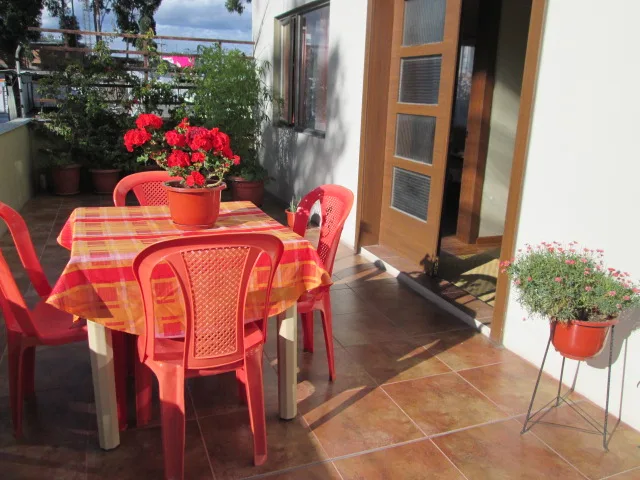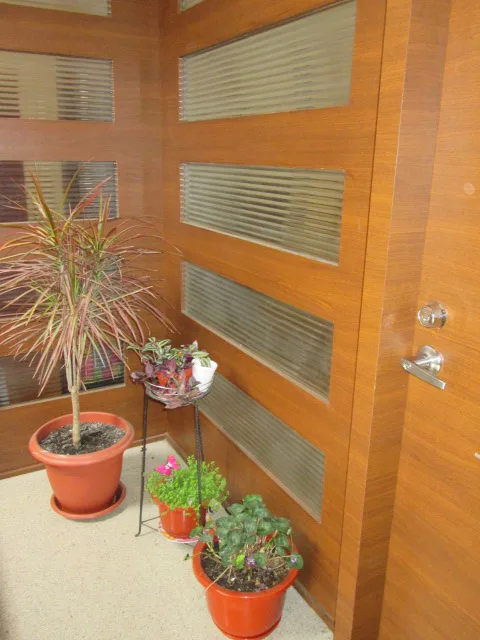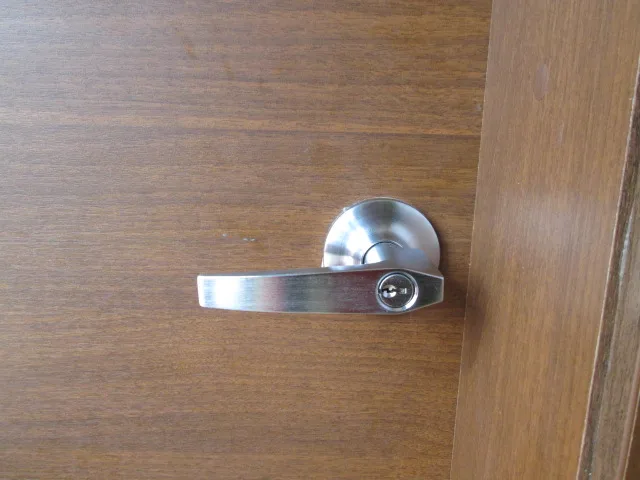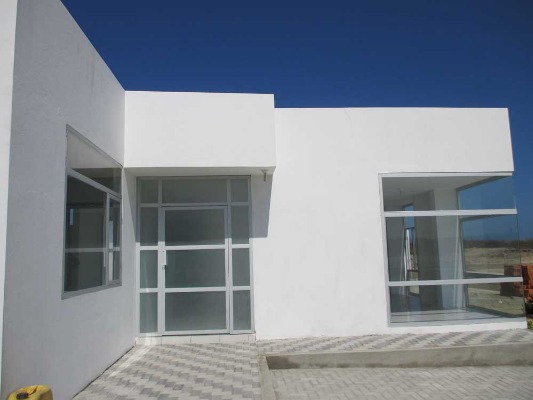Choosing the right environments for healthful living
By Wendy Jane Carrel
Moving to Ecuador?
Already here and planning another move?
Below are 12 housing recommendations with an eye to long-term health and safety no matter your age. These guidelines are not just Ecuador or Cuenca specific, but for wherever you choose to live.
- Choose a home or building with easy access, concrete as opposed to slick tile or marble entrances, large gates and doors, and wide hallways should you, God forbid, become somewhat immobile and require a wheelchair or crutches. Accidents are possible, especially when it’s raining, and tiles and marble are not for the faint of heart. Also, as we age, bones become more fragile and falls can have serious consequences, sometimes leadingto further health complications. Make certain doors are wide enough (they are in most new buildings in Ecuador) to accommodate a wheelchair.
- Choose a building with elevators. Climbing stairs becomes more difficult with age and poses increased risk of falls. They are especially difficult to climb with a cane or a walker. Elevators also make it quicker and easier to get in and out of a building.
- Choose housing away from bus lines if you have allergies and environmental sensitivity. Diesel fuel permeates the air in Ecuador’s large cities (as in other cities around the world). If you have breathing issues, it is possible your issues could become worse. Cuenca’s new electric trolley system, being built now, may help solve this soon.
- Choose low or no VOC odorless paint available in most large Ecuadorean cities.
- Think about choosing a condo or building with a guard, especially if you are new to the country and alone. This is for physical safety and peace of mind. Even though this statement is intended as practical advice and is not fear-based, some people would not agree. But if you are a woman alone, it is usually an added bonus to be in a guarded building if you can afford it. Such buildings usually have security cameras. For those of us unused to guards and gates it might not seem normal, but this is a different culture and until you have lived in Ecuador and know your way around, it could be a form of insurance. Guards know when you are coming and going. They’ll realize something is amiss when you don’t follow your regular pattern, which will often prompt a call from the building administrator.
- Notice any odors or mustiness. Many old buildings, although charming, can be damp and contain mold, especially ground floor apartments. You will feel and smell the dampness right away, as well as the cold. If you suffer from asthma or are prone to bronchitis, best to choose a place on the second floor or higher. Also, have someone check the walls for interior mold just as you would in North America.
- Choose, if possible, a place with safe flooring. Wood is warmer and safer to fall on than tile. Professional dancers only dance on wood because it is flexible. There are many residences, old and new, with beautiful, authentic wood flooring or faux wood flooring. Cold tile beneath your feet can worsen arthritic conditions. It is unforgiving and easy to slip or fall on. Linoleum and marmoleum are eco-friendly floor choices, safer to fall, stand, or walk on. This flooring lessens fatigue, dampens noise, is durable, water resistant, and bacteria resistant. Although it is uncommon in Ecuador, you’ll see linoleum flooring in home supply stores just as you do in North America. If you find a place with carpeting (quite rare) be certain to have it shampooed every six months. Note: I have yet to see a mud room in Ecuador, a country where it rains often. You can keep your living areas sacred and healthful by leaving your shoes at the door so you are not tracking debris from outside to inside; wear house shoes instead.
- Choose a place with good ventilation, and a lot of light. Dark spaces with few or no windows are part of traditional Spanish design and considered normal in Ecuador. Most new buildings, however, offer energy of light and space with patios, balconies, floor to ceiling windows, French doors, sliding doors, and views. Studies have been conducted showing bright light can help relieve depression and loneliness, lessen fatigue, and most of all, contribute to your well-being. For information, click here, and here.
- Do you suffer from the cold? Are you susceptible to bronchitis or pneumonia? Choose eastern, southern, and western exposures because buildings in the Andes, unless constructed by North Americans, have no insulation. Having neighbors above, below, and on the sides may keep you warmer unless you are several stories high where heavy winds and drafts can enter. Some buildings are colder inside than outside. If you are from Canada, the northern tier of Europe or the U.S., this may not be an issue. But if you are a desert person, it might be. Energy costs are higher in Ecuador than in North America and running a portable floor heater could cost you between $100 and $300 a month. (Standard electric bill in Cuenca, without electric heating, is around $20). Some people use portable gas heaters for about $2/month but there could be health concerns with emissions and possible fires; be careful if you choose to use them.
- Are you sensitive to noise? Check out the dogs and roosters in the neighborhood, the number of cars parked on the street with car alarms, if there is a church nearby (parades, festivities, fireworks), and whether or not your neighbors are party people. You can hear through walls in some buildings. It is possible to find quiet, but you must look for it.
- Check for bugs. Do bugs like you? Baby spiders, generally harmless, and an occasional fly are common, as they are in most places of the world. But there is an invasive little bug, a “sancudo”, an invisible flea akin to the “no seeum”, that lurks in grass around abandoned buildings, on street dogs, and at lower elevations. The bites are annoying. So if you are renting a home and have pets and grass outside, this might be a consideration. Also, if you are living in a home with grounds, you might come across an occasional tarantula. Mosquitoes live in the high Andes but mosquito bites here don’t seem to have the impact they do in Italy or Japan, unless you are in lower tropical regions of Ecuador where dengue fever is a possibility. Disease-carrying do not yet live above elevations of 7,000 feet (for more about this, click here, and here).
- Check for standard universal housing features. Since the 1950’s Europe, Japan, and North America have implemented safe design guidelines for living spaces for persons of any age. Laws were enacted in 1973 (U.S. Rehabilitation Act) and 1991 (Fair Housing Act) requiring public places, workplaces, assisted living homes, hospitals, rehab facilities, and any housing built with federal funds to follow certain standards. Many city building departments in North America have strict health and safety guidelines builders must adhere to. Not so in Ecuador. Some items for your check list – European lever door handles (easier to open than round door knobs and found in most new buildings), superior lighting, rocket light switches, ramps, side railings along stairwells, thresholds flush with the floor, round corners instead of sharp corners, rounded furniture instead of furniture with sharp edges, wood furniture instead of metal, easy access showers and tubs with non-slip surfaces (Ecuadorians are smaller than most North Americans so make sure you will have enough room in your shower and/or tub). For more information, click here.
There are many good books on the subject of safe, healthful housing. The list above provides a summation of key elements to keep in mind, and is based on experience of providing housing for the disabled and the elderly.
Wendy Jane Carrel, M.A., is a bi-lingual North American. She has spent over two years traveling province to province in Ecuador (as well as in Chile and Mexico) researching senior care options. In her home state of California she served as a Senior Center Director for a city, Head of Information and Outreach for a County Office on Aging, Administrator in Assisted Living (including Alzheimer’s care), and a non-profit communications and grants officer. She offers guidance for North Americans who wish assistance negotiating the Ecuadorian health system, senior care options countrywide, end-of-life care, and disposition of remains. See www.WellnessShepherd.com or contact her at wellnessshepherd@aol.com



























